Castagnaccio is a traditional Italian chestnut flour cake that is easy to make, wholesome, nutritious, naturally vegan, and gluten-free.
For more Italian cake recipes, try our orange cake, ricotta pie, and egg-free apple cake.
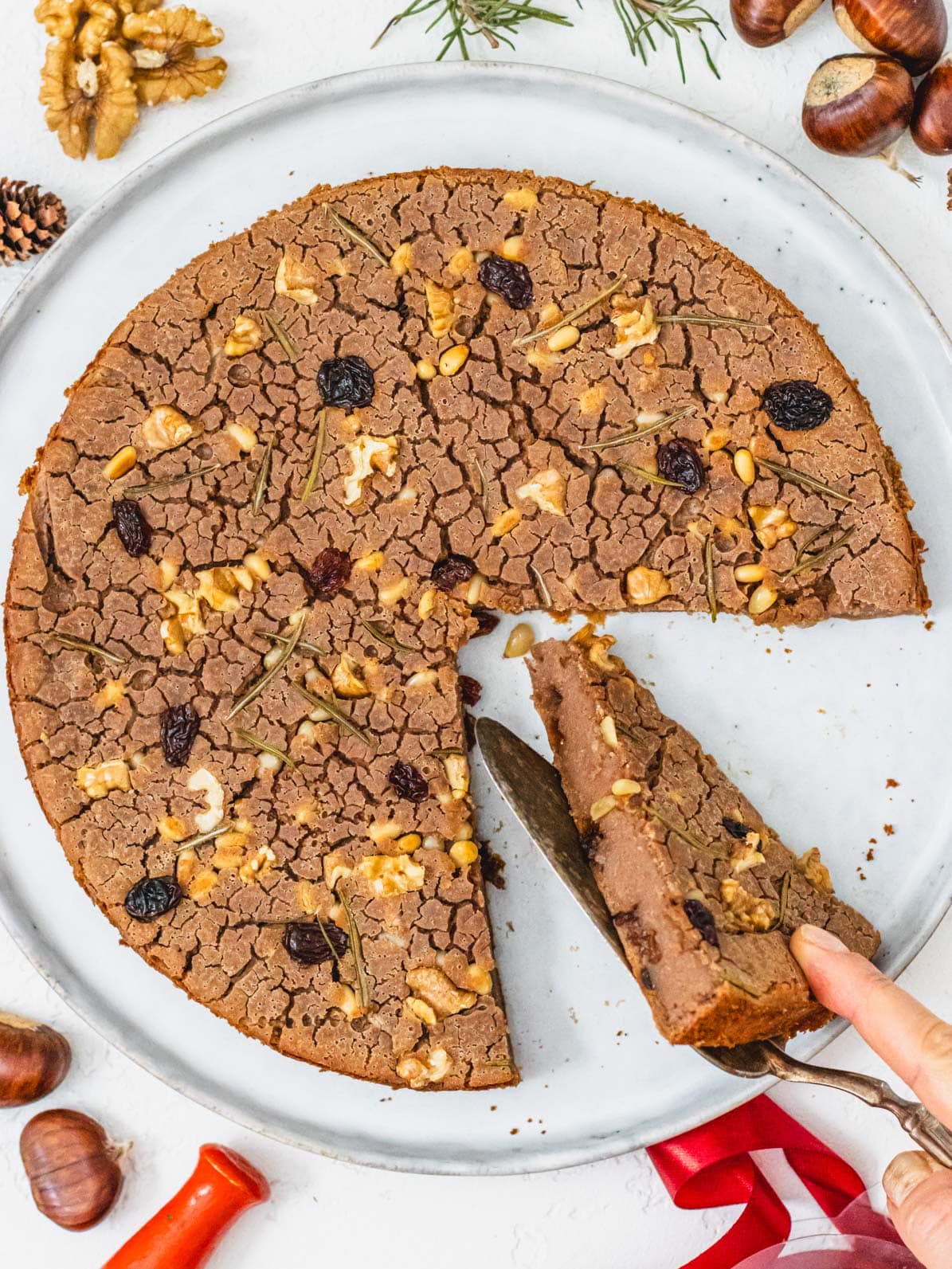
Table of Contents
Dietary Note: this recipe is suitable for a vegetarian, vegan, and gluten-free diet.
How do you say castagnaccio?
Castagnaccio is best enjoyed in autumn and winter, when chestnuts are in season, and chestnut flour is at its best.
This simple chestnut flour cake is easy to put together with simple ingredients such as chestnut flour, extra virgin olive oil, pine nuts, walnuts, raisins, and rosemary sprigs.
It’s delicious served on its own or with some fresh ricotta, chestnut honey, local new red wine, or sweet wine like Vin Santo.
Castagnaccio is a humble dish, part of what in Italian is called “cucina povera.”
It was a staple of the local mountainous population that lived in the Apennines mountains, where chestnuts were a staple during the fall and winter months.
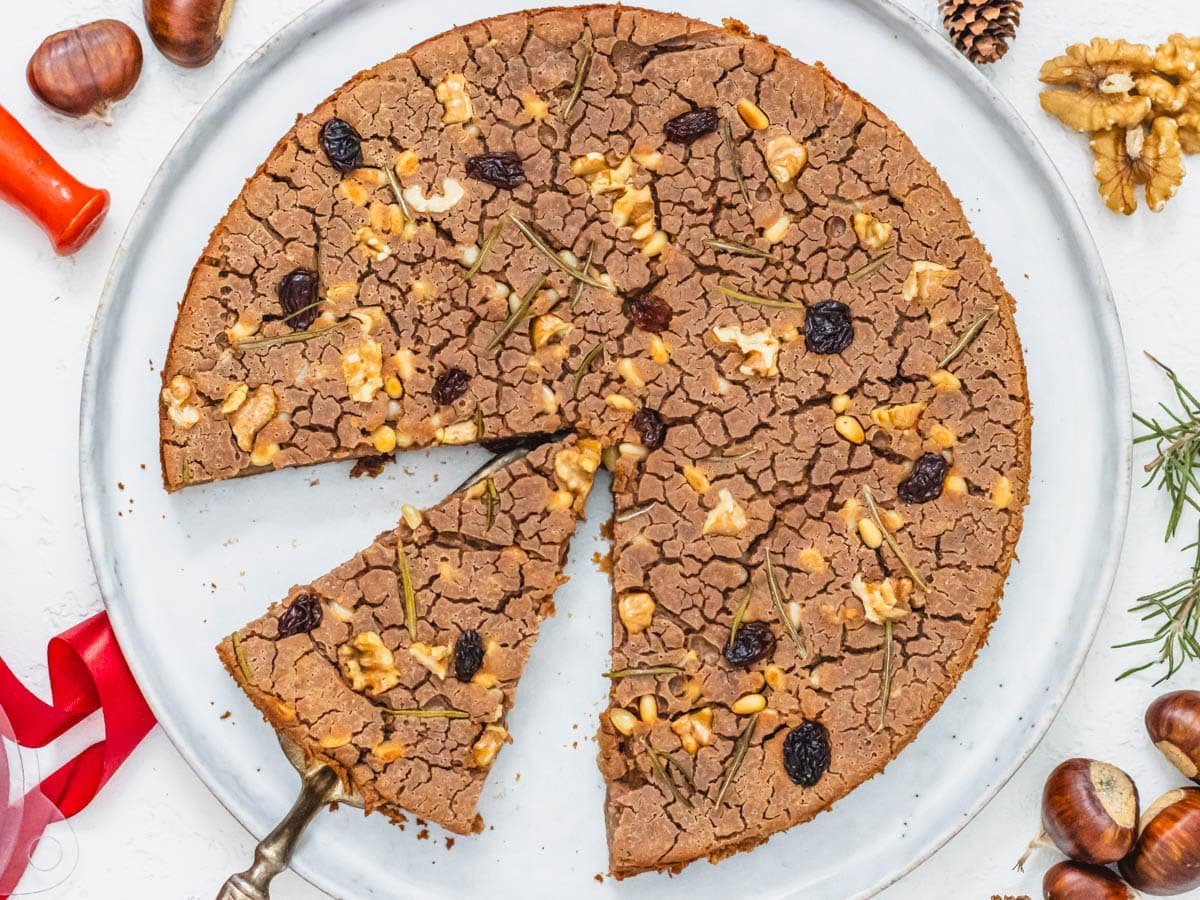
Ingredients & Substitutions
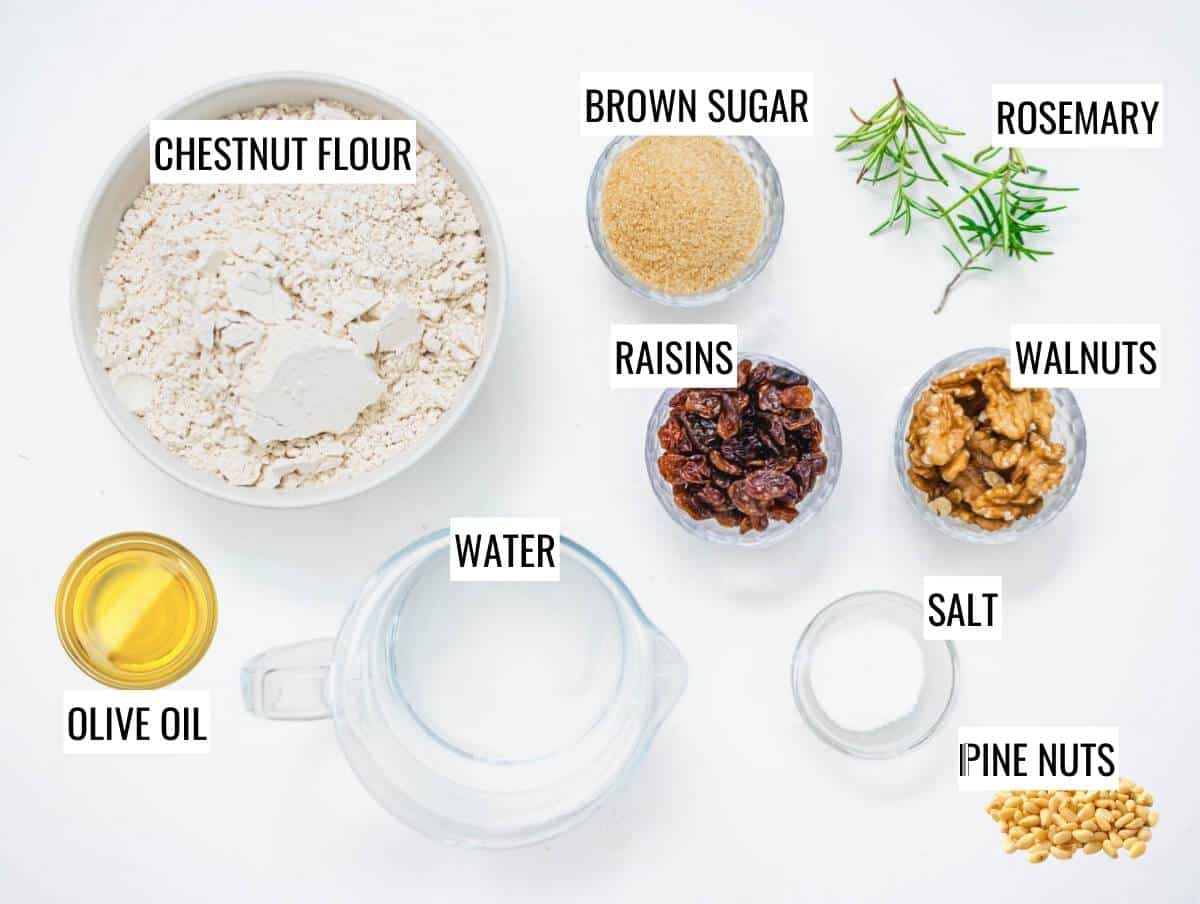
Quantities are in the recipe box at the bottom of the page.
Chestnut flour
You can find chestnut flour in larger supermarkets, health stores, organic food stores, or Italian specialty stores.
It’s generally sold next to the nuts section of the store or next to gluten-free or organic items.
Since chestnuts are a seasonal fruit, it’s easier to find chestnut flour during fall and winter, especially around Halloween.
Sugar
White and brown sugar work equally well in this Tuscan chestnut cake.
Extra virgin olive oil
Extra virgin olive oil is used in the traditional recipe as that was the only type of oil available to the local population.
You can substitute olive oil for extra virgin olive oil.
Raisins
Raisins are delicious with chestnut flour and a traditional castagnaccio ingredient.
Nuts
We recommend using a combination of pine nuts and walnuts. You can also pick one of them too.
Rosemary
Rosemary adds an elegant aroma and a rustic Italian charm to this chestnut flour cake.
You’ll only need the needles of a fresh rosemary sprig. Avoid dry rosemary.
Substitute orange zest for rosemary.
Water
Plain tap water to bring everything together.
Salt
A pinch of sea salt helps bring out the flavor of the other ingredients and tie them together.
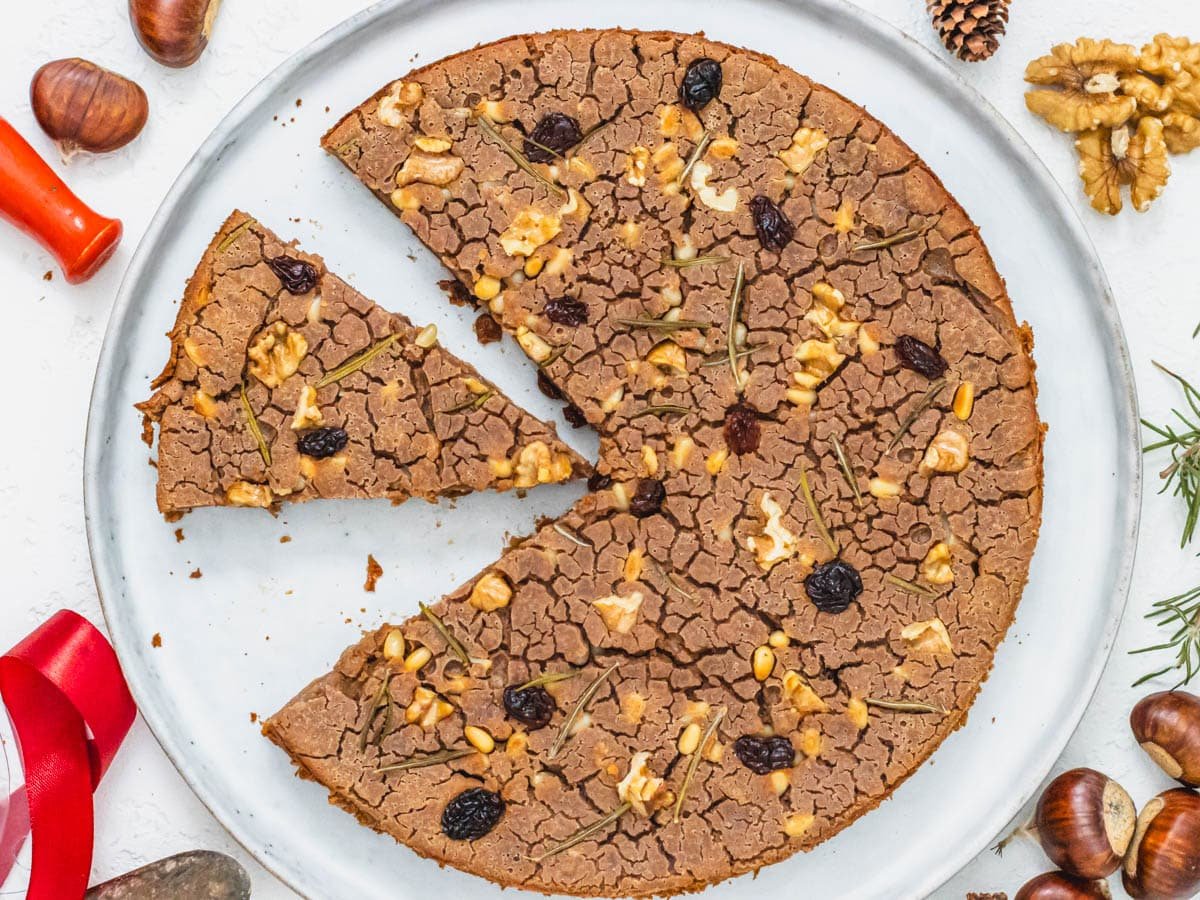
How to make castagnaccio
US cups + grams measurements in the recipe box at the bottom of the page.
Preheat the oven to 400°F or 200°C. Line your 9-inch cake pan (22-23 cm)with parchment paper.
Soak the raisins in a small bowl with hot water for 10 minutes.
Add chestnut flour, water, sugar, extra virgin olive oil, and a pinch of salt to a blender. Blend for two minutes or until smooth.
Tip: if you don’t have a blender, you can do what the Tuscans used to do, which is whisk the ingredients together in a large bowl.

Take the blender pitcher off the blender and add almost all the raisins (drained from their soaking water), chopped walnuts, and pinenuts.
Set aside some raisins, walnuts, and pine nuts for garnishing.
DO NOT BLEND; stir with a spoon to mix the ingredients.
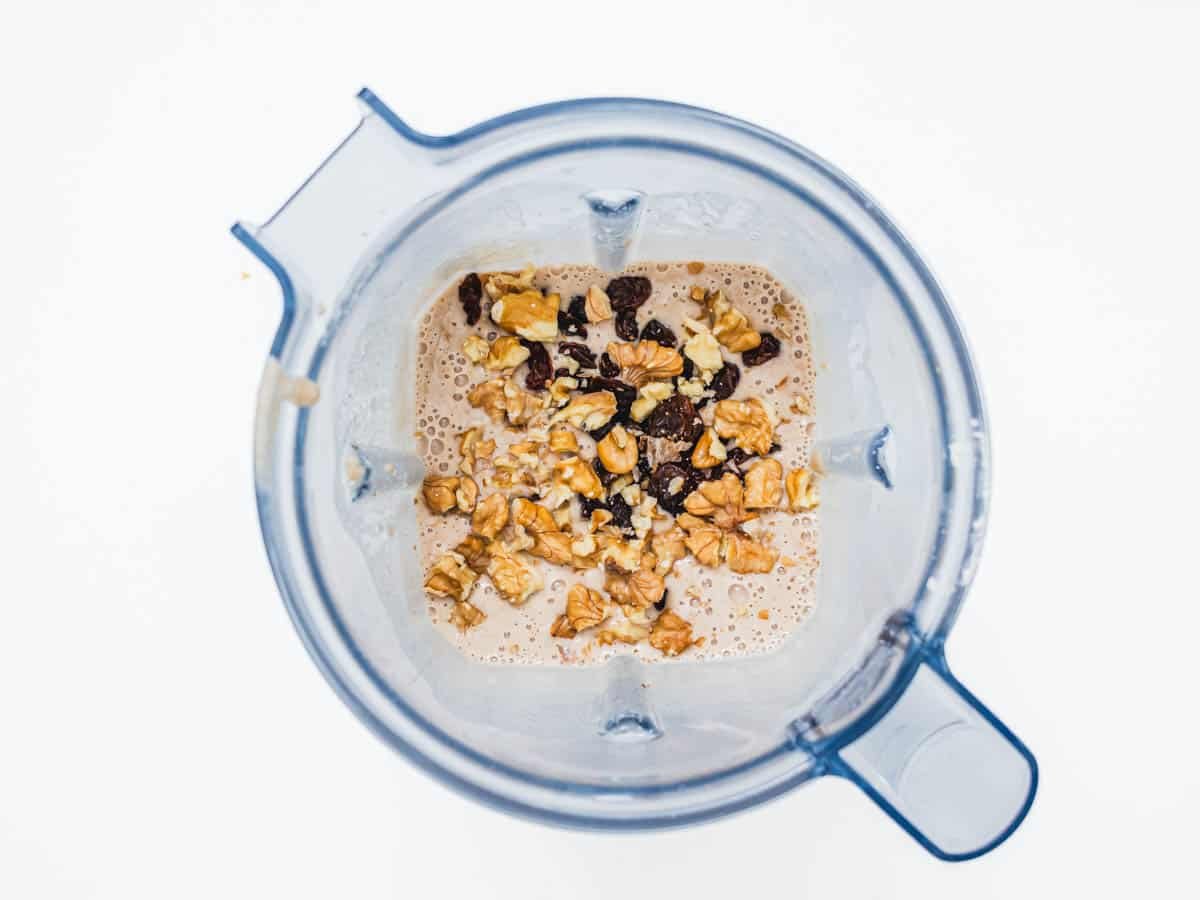
Pour the mixture into the cake pan. Then, scatter the remaining raisins, walnuts, and pin nuts on top.
Finally, add a few rosemary needles and drizzle with extra virgin olive oil.
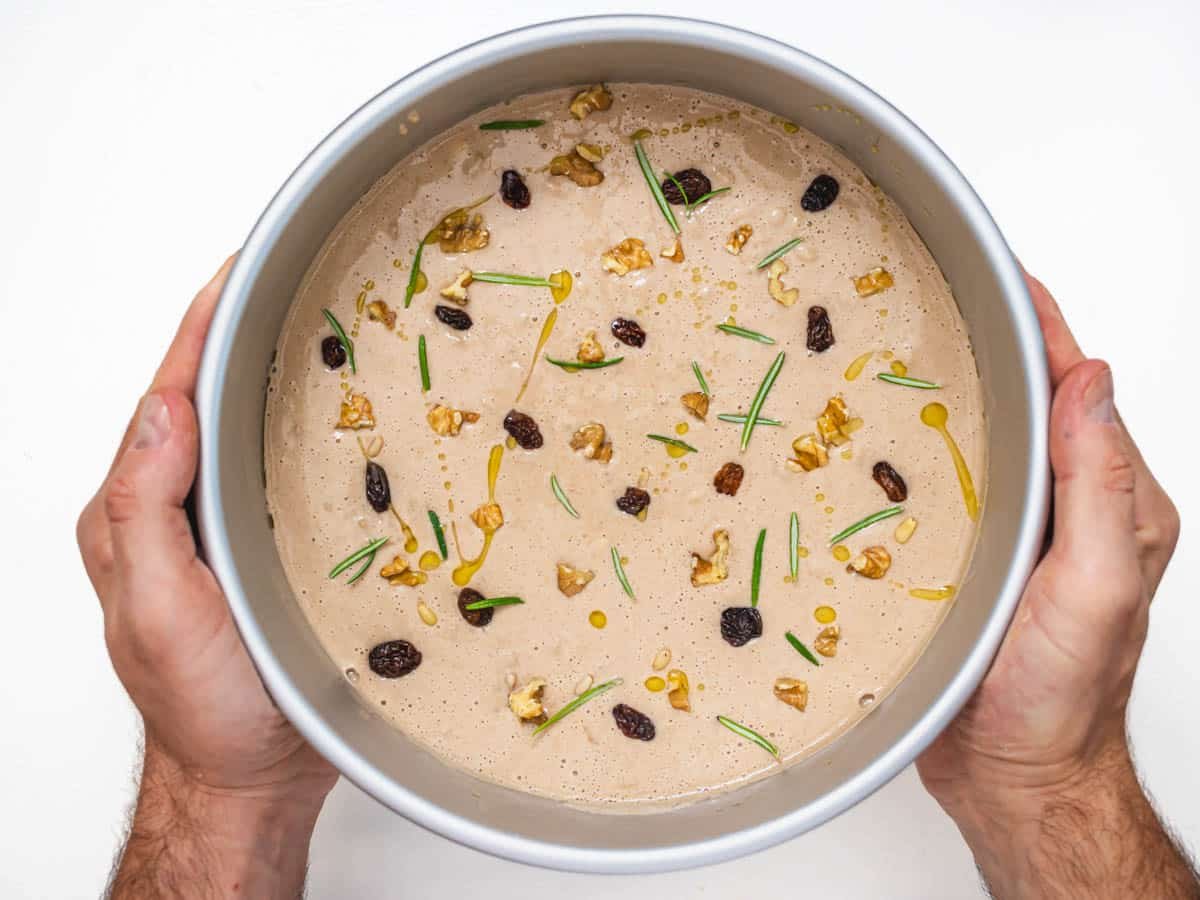
Bake in the oven at 400°F or 200°C for about 35 minutes.
Then, let cool down for 10 minutes, and remove from the pan. Cut and enjoy slightly warm or at room temperature.
You can sprinkle it with powdered sugar to make it look prettier, but that’s optional.
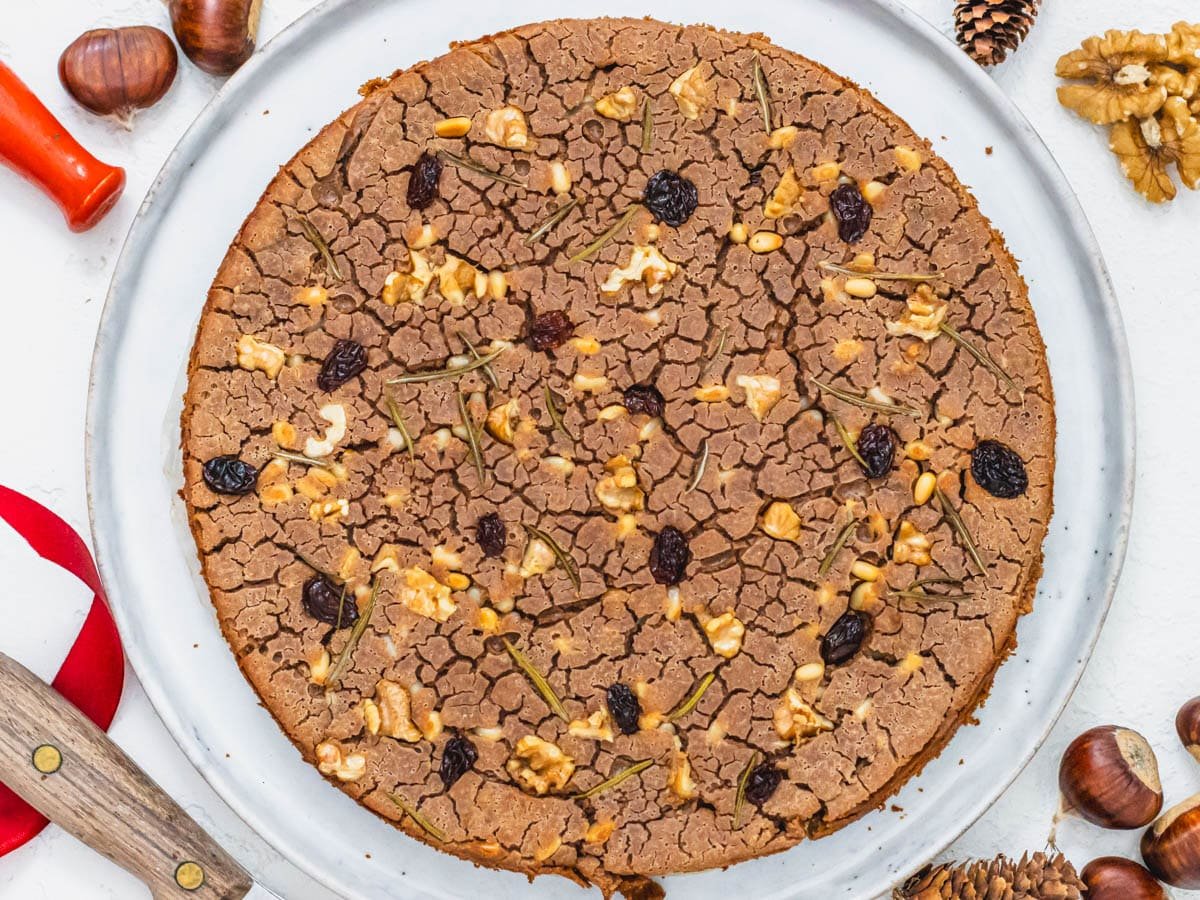
Serving suggestions
You can eat castagnaccio as a breakfast, snack, or a delicious and wholesome dessert after a meal.
If you do so, we recommend pairing it with an Italian red wine or sweet wine like Vin Santo and serving it with some fresh Italian ricotta and a drizzle of chestnut honey.
That’s how people have been eating castagnaccio in Italy for centuries, and it is the best way to enjoy this delicious treat.
How to scale this recipe?
This recipe is easy to scale. We calculated the scaling number for you.
Pick the pan size you want to use for your cake, then multiply all the ingredients in our recipe box by the scaling number in this table.
| Cake pan size | Scaling Number |
|---|---|
| 4 inch (10 cm) | 0.22 |
| 5 inch (13 cm) | 0.31 |
| 6 inch (15 cm) | 0.44 |
| 7 inch (18 cm) | 0.60 |
| 8 inch (20 cm) | 0.79 |
| 9 inch (23 cm) | 1 |
| 10 inch (25 cm) | 1.23 |
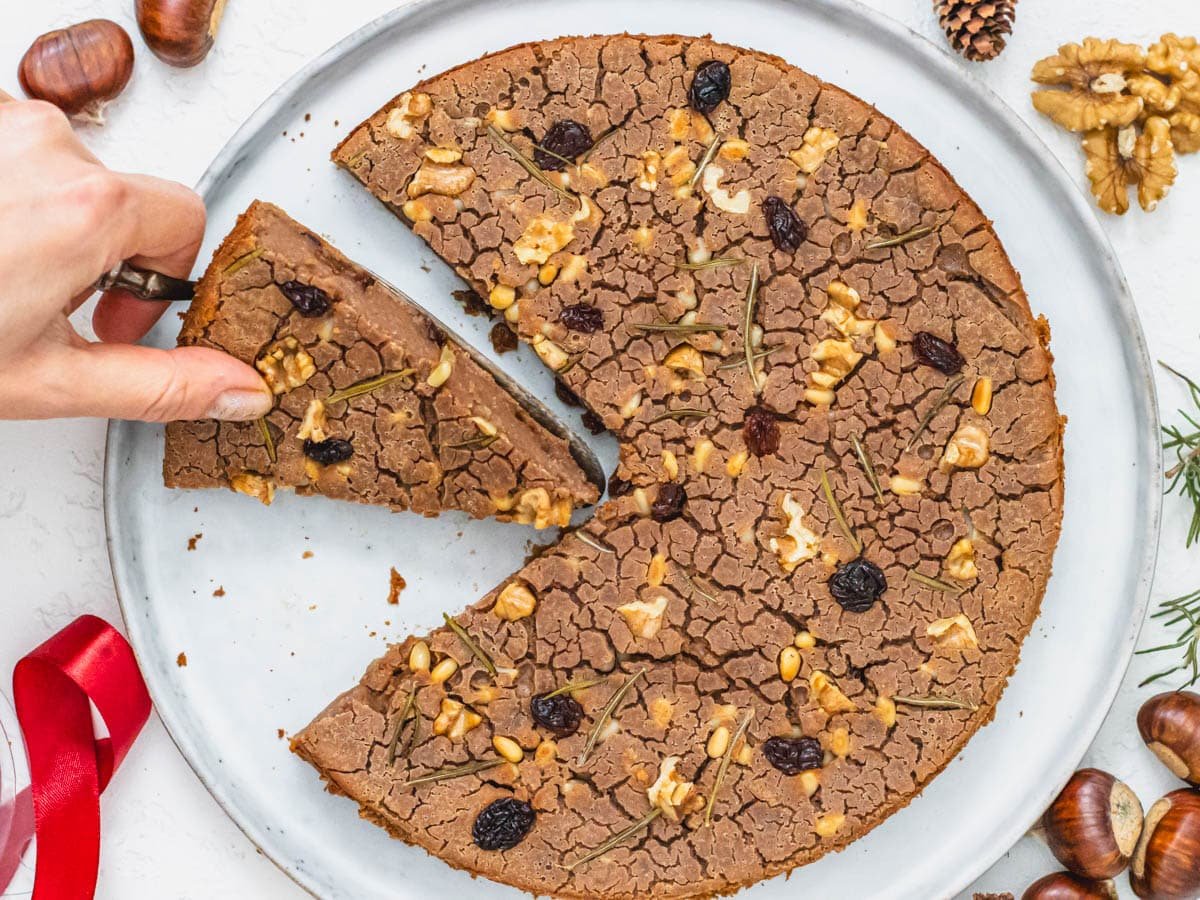
Storage & Make Ahead
Make ahead: castagnaccio is an excellent recipe to make ahead as it keeps well for days, and it can be enjoyed at room temperature.
Storage: keep in a cake dome or an airtight container at room temperature for 3 days. Alternatively, you can put it in the fridge for up to 5 days.
Freezer: let the cake cool down completely, wrap it in film, and freeze for 3 months.
Thaw and reheat: defrost in the refrigerator over several hours. Serve at room temperature or slightly warmed in the microwave.
More chestnut recipes
Desserts
Chocolate truffles
More fall desserts
- Vegan apple cake
- Vegan carrot cake
- Italian biscotti (cantucci) recipe
- Vegan custard
- Pear cake
- Vegan apple crisp
- Vegan pumpkin bread
- Apple muffins
Desserts
Vegan Apple Cake
Desserts
Vegan Carrot Cake
Desserts
Biscotti
Desserts
Vegan Custard (Pastry Cream)
For many more easy dessert ideas, check out our desserts category page.
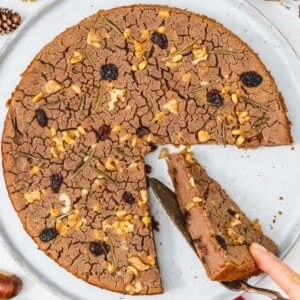
Castagnaccio: Chestnut Flour Cake
Equipment
- Blender or immersion blender
- cake pan 9 inch or 23 cm diameter
Ingredients
- 2½ cups chestnut flour
- 2 cups water
- ¼ cups sugar
- 2 tablespoons olive oil
- ⅓ cups raisins
- ¼ cups walnuts chopped
- 3 tablespoons pine nuts
- 1 sprig rosemary the needles
- ⅛ teaspoon salt
Instructions
- Preheat the oven to 400°F or 200°C. Line your cake panwith parchment paper.Soak ⅓ cups raisins in a small bowl with hot water for 10 minutes.Add 2½ cups chestnut flour, 2 cups water, ¼ cups sugar, 2 tablespoons olive oil, and ⅛ teaspoon salt to a blender. Blend for two minutes or until smooth.
- Take the blender pitcher off the blender and add almost all the raisins (drained from their soaking water), ¼ cups walnuts, and 3 tablespoons pine nuts.Set aside some raisins, walnuts, and pine nuts for garnishing.DO NOT BLEND; stir with a spoon to mix the ingredients.
- Pour the mixture into the cake pan. Then, scatter the remaining raisins, walnuts, and pine nuts on top.Finally, add the needles from 1 sprig rosemary and drizzle with extra virgin olive oil.
- Bake at 400°F or 200°C for about 35 minutes. Then, let cool down for 10 minutes, and remove from the pan. Cut and enjoy slightly warm or at room temperature.
Notes
Nutrition
If you liked this chestnut cake, you might also enjoy:

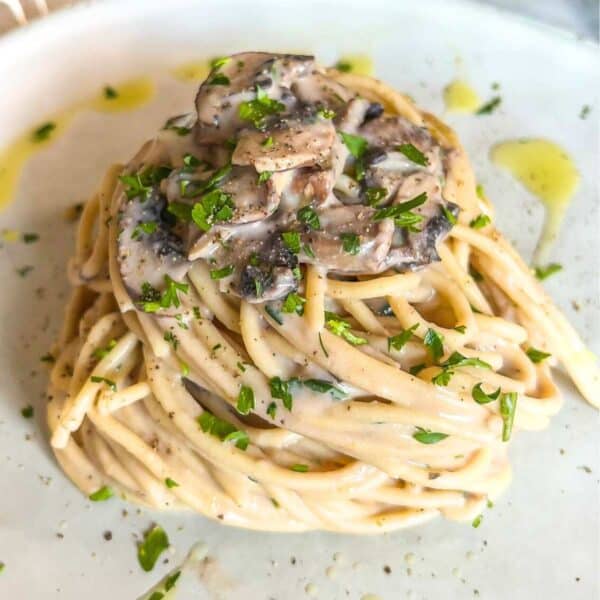
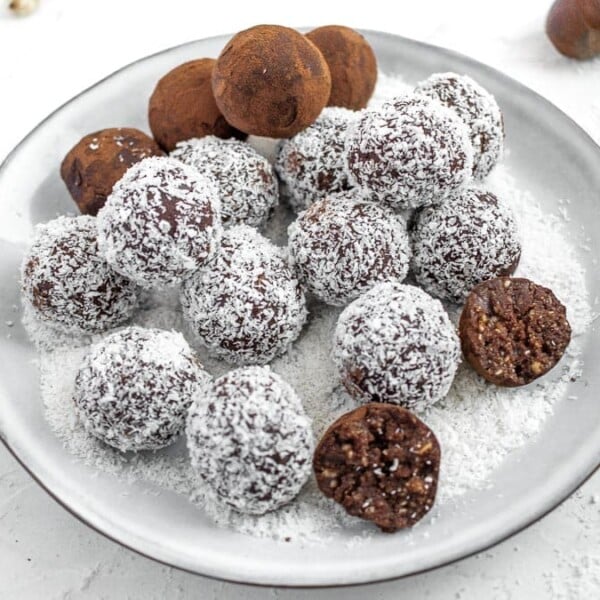
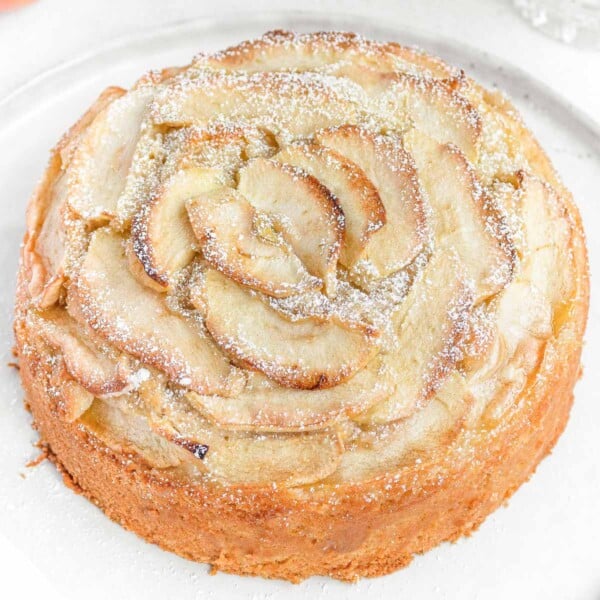
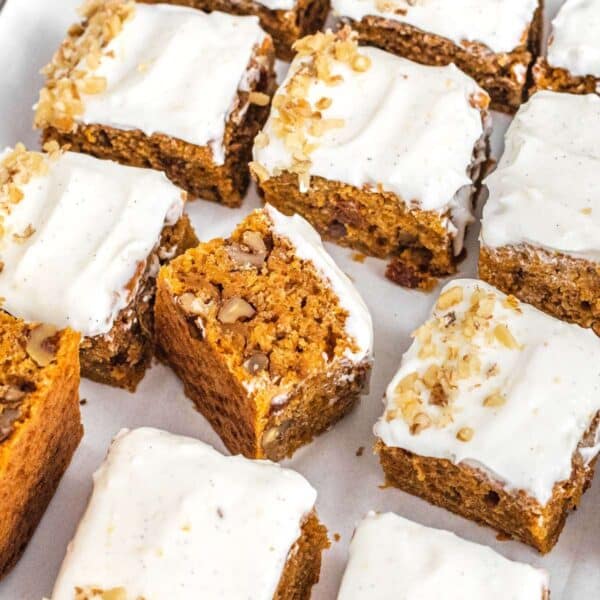
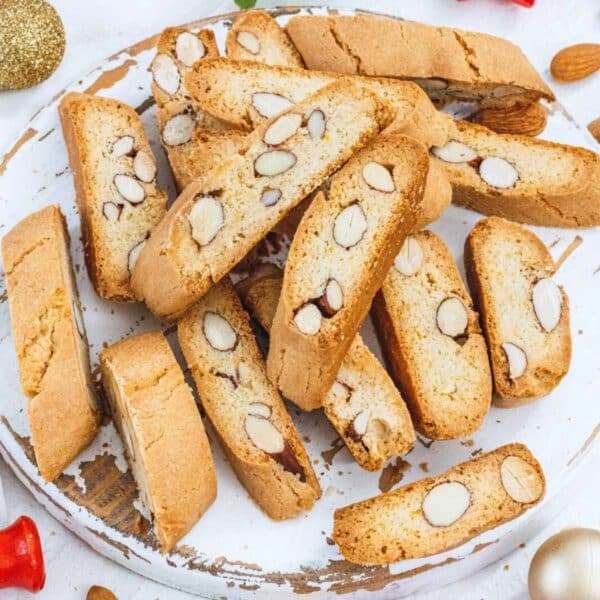
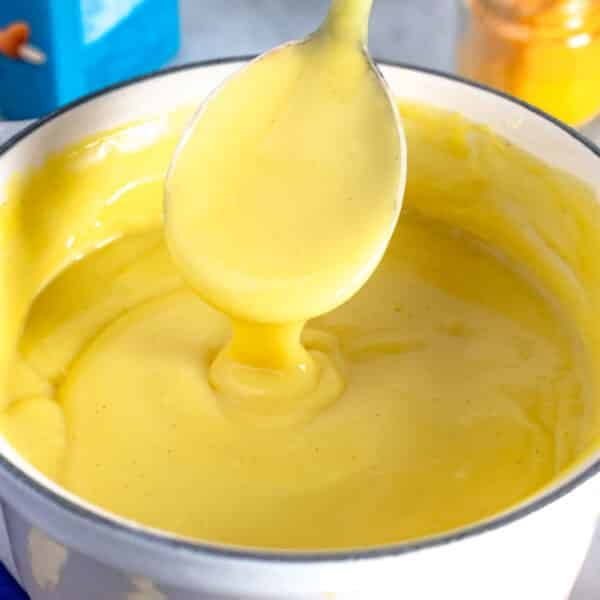
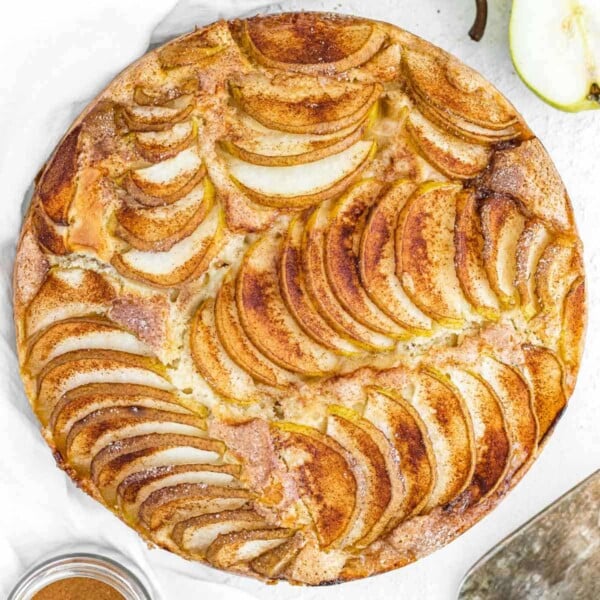
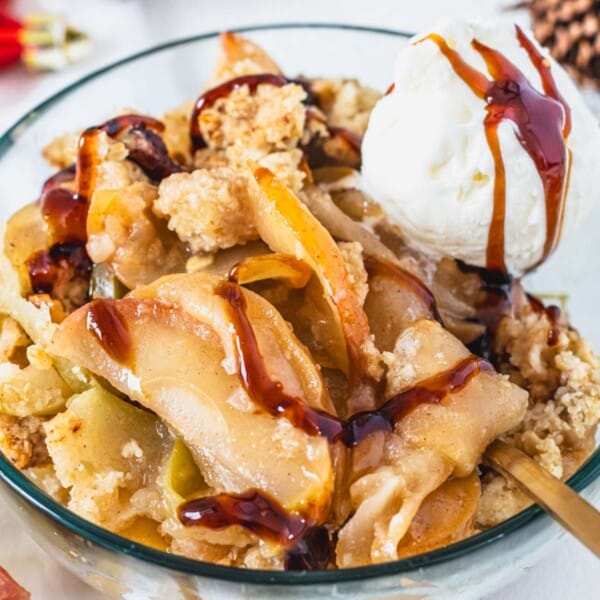

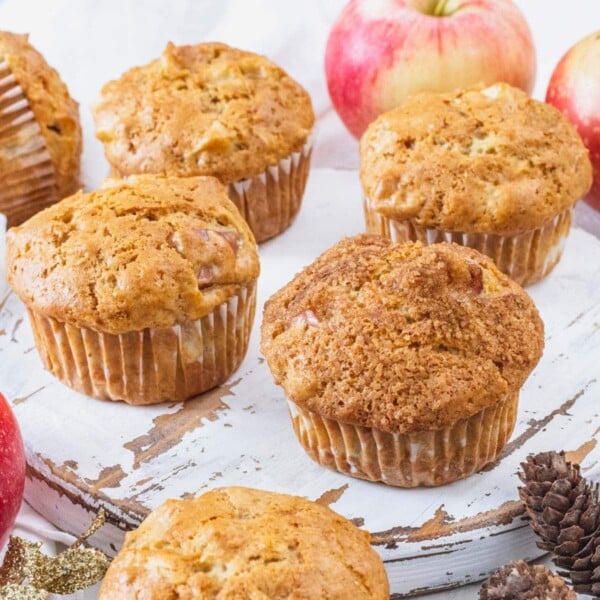
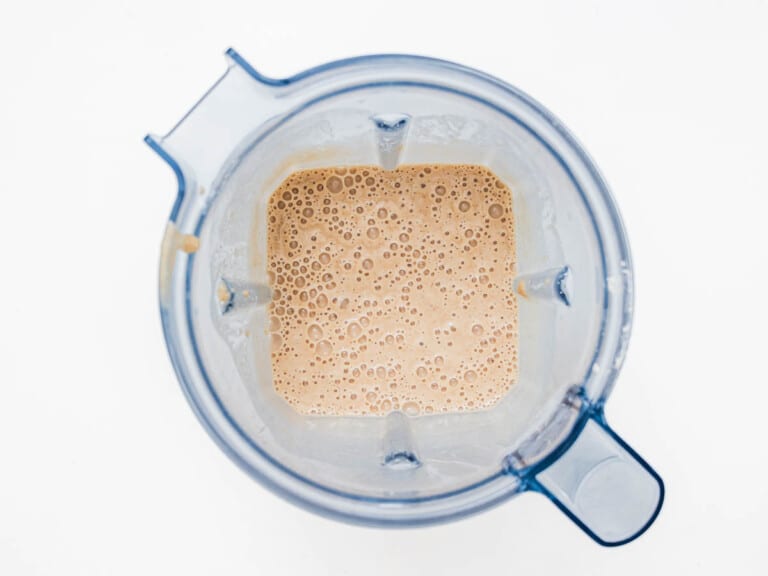
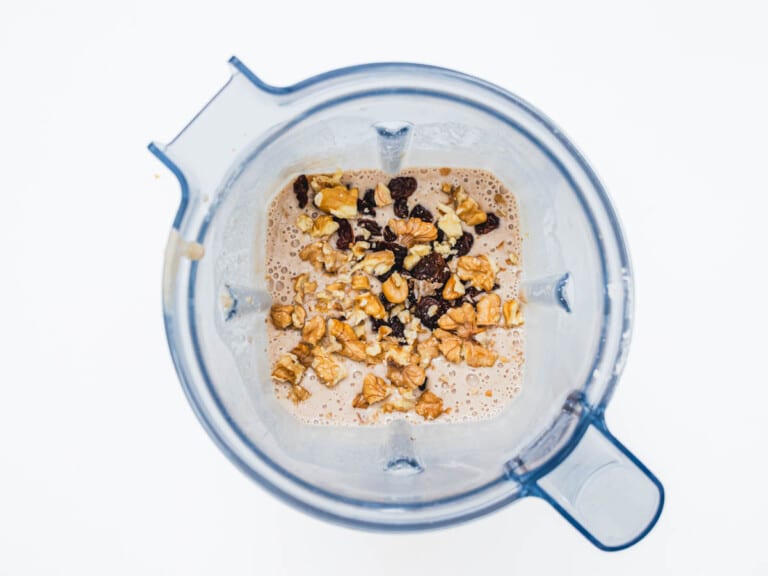
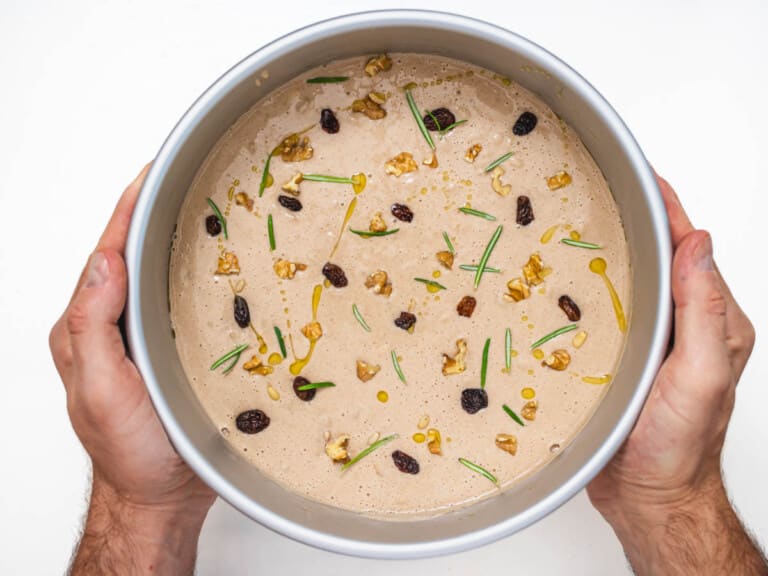
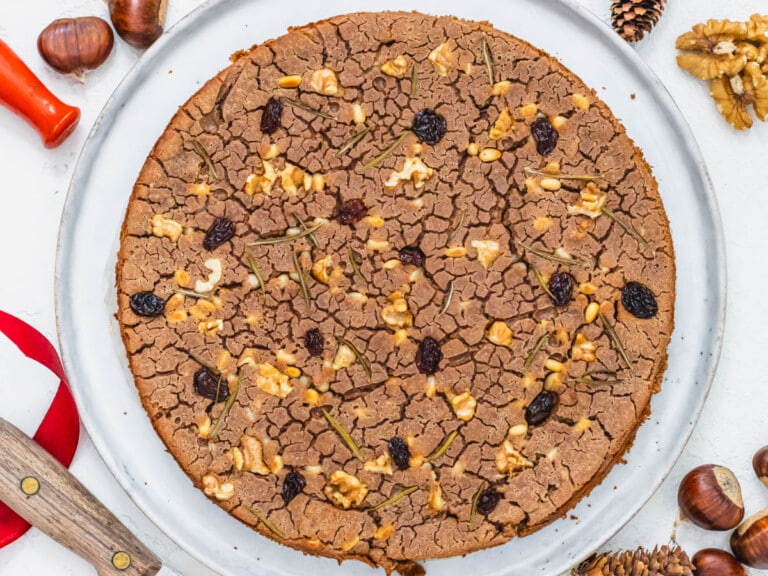
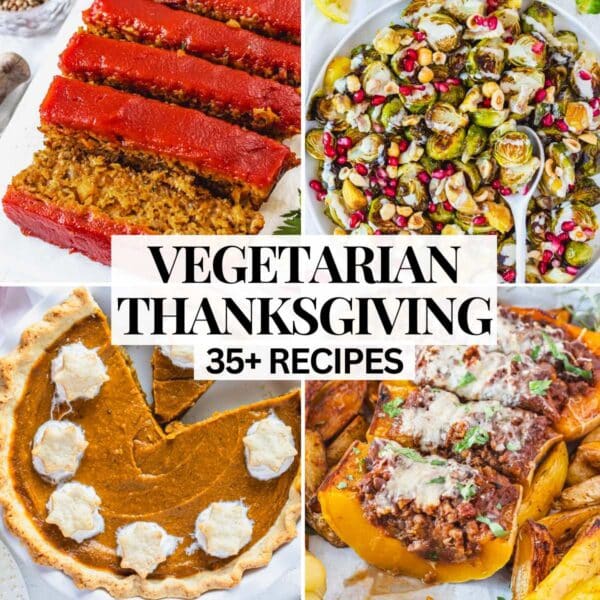




Very easy straight forward recipe – genius to be cooking with olive oil- my cake ended up with the perfect cracks and very custard like texture —, but unfortunately being very bitter- I thought it was the flour but it ended up being the cedarnuts I had replaced. So if you think about swapping – not to be recommended. Will try again with real cedar nuts.
I can’t wait to try this recipe but how do you use the rosemary? Just for decoration?
Hi Monica, I’m delighted you feel like making the chestnut cake! The fresh rosemary is optional, but we add it on top of the cake just before baking. It adds a rustic and herby contrast to the sweetness of the cake. I hope that helps. Cheers, Louise